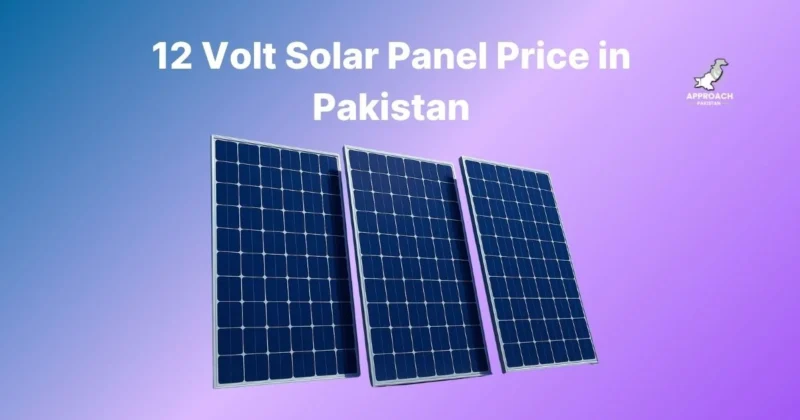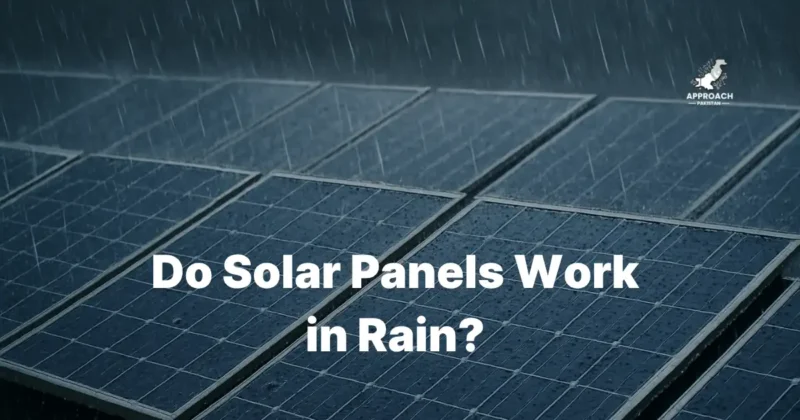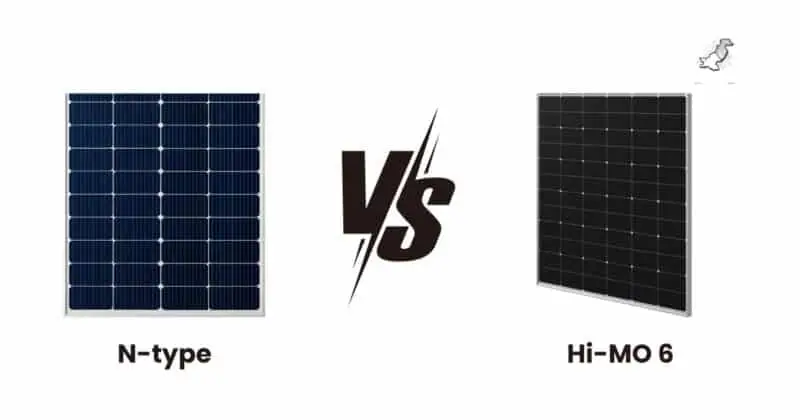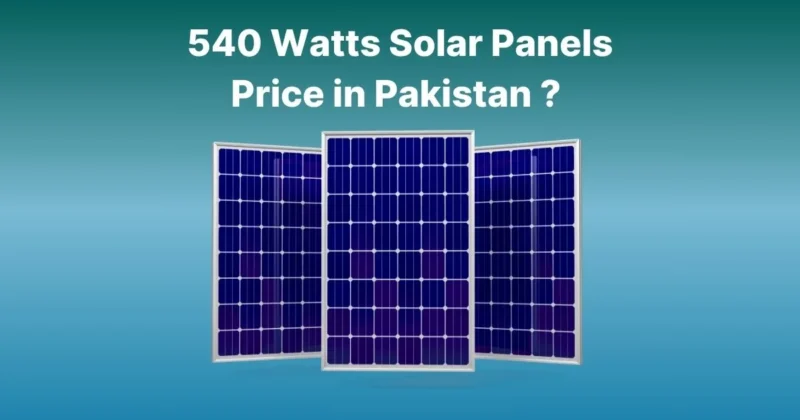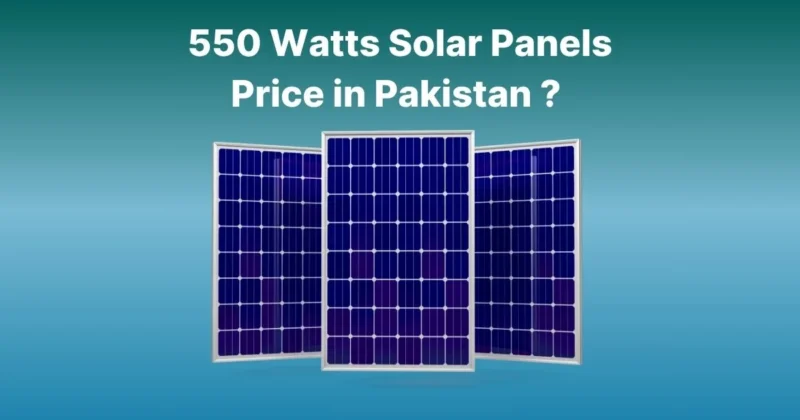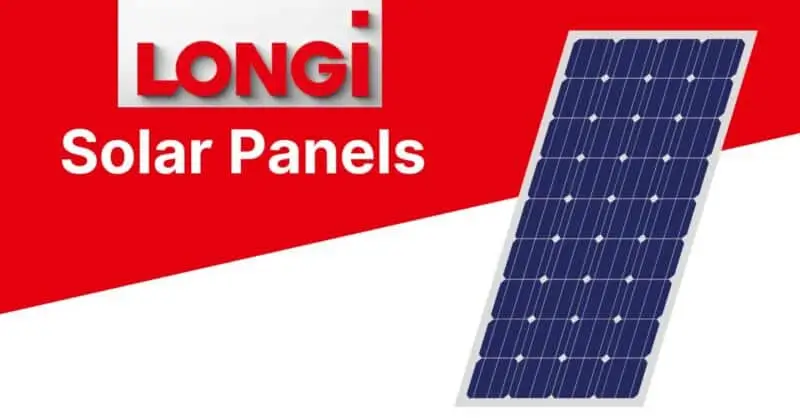How Many Solar Panels Required For 1.5 Ton AC?
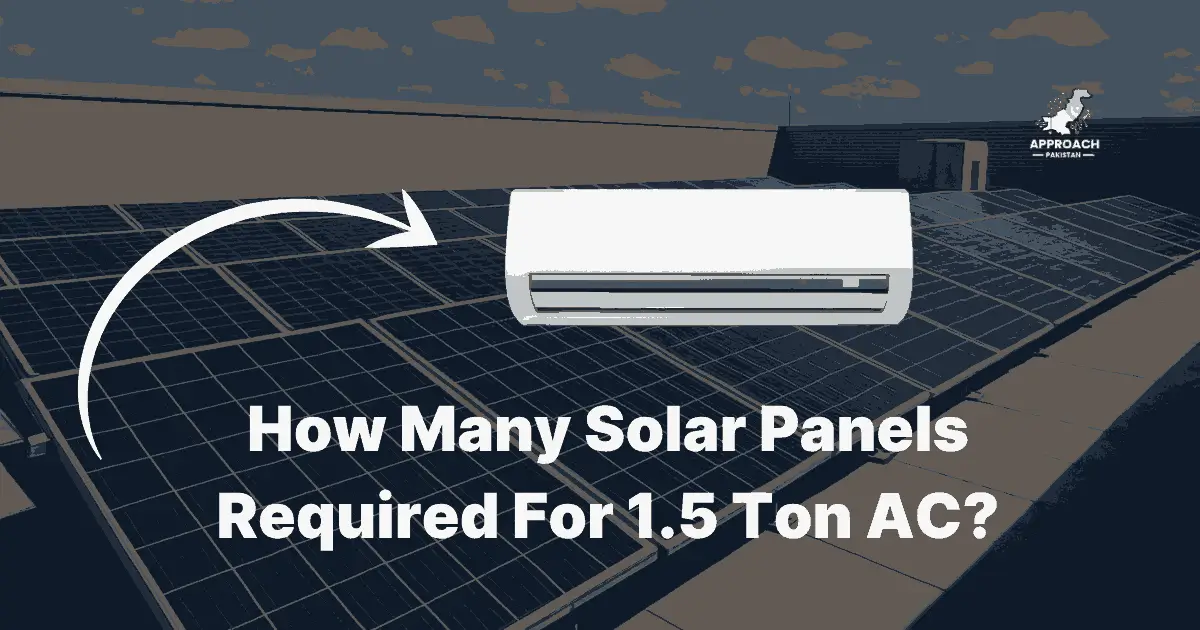
For a 1.5-ton AC in Pakistan, you need 5-6 solar panels of 585W each, 6-7 panels of 540W, or 7-8 panels of 440W. This setup requires a 3-4kW solar system with proper inverter and battery backup for optimal performance.
Introduction: Solar-Powered Cooling in Pakistan
Your electricity bill hitting PKR 25,000+ monthly because of AC usage? You’re not alone. With grid power failing when you need cooling most, thousands of Pakistani families face this nightmare every summer.
The scorching heat turns homes into ovens. Yet running a 1.5-ton AC feels like watching money disappear. Power outages strike right when temperatures peak, leaving families sweating in the dark.
1.1 Why Switch to Solar AC Systems?
Solar power cuts your cooling costs by 70-80% immediately. No more bill shock. No more sweating during load shedding. Pure energy independence from Pakistan’s unreliable grid.
Think of solar as buying 25 years of cooling upfront. The math works beautifully – most systems pay themselves back within 3-4 years.
1.2 Understanding 1.5 Ton AC Specifications
A 1.5-ton AC doesn’t weigh 1.5 tons – it removes heat equivalent to melting 1.5 tons of ice daily. That’s 18,000 BTUs per hour of cooling power.
Your typical 1.5-ton inverter AC consumes 1,500-1,800 watts. Conventional models gulp 2,000-2,400 watts like a thirsty camel. This difference determines your solar panel count.
| AC Type | Power Consumption | Efficiency |
| 5-Star Inverter | 1,200-1,500W | Excellent |
| 3-Star Inverter | 1,500-1,800W | Good |
| Conventional | 2,000-2,400W | Poor |
Solar Panel Requirement for 1.5 Ton AC in Pakistan
2.1 Panel Count by Wattage (440W, 540W, 585W)
For 585W panels: 5-6 panels power your 1.5-ton AC comfortably. High-efficiency panels mean fewer roof installations and better aesthetics for your home.
Here’s the breakdown by panel wattage:
| Panel Wattage | Panels Needed | Total System Size | Roof Space Required |
| 585W | 5-6 panels | 2.9-3.5kW | 45-55 sq ft |
| 540W | 6-7 panels | 3.2-3.8kW | 55-65 sq ft |
| 440W | 7-8 panels | 3.1-3.5kW | 65-75 sq ft |
2.2 System Size Requirements
Your 1.5-ton AC needs a 3-4kW solar system minimum. This accounts for inverter losses, battery charging, and other household loads running simultaneously.
Going smaller means disappointment. Your AC won’t run properly during cloudy periods or high-demand situations.
2.3 Cost Estimation Calculator
| System Component | Price Range (PKR) | Quality Level |
| 3kW Solar Panels | 180,000-220,000 | Tier-1 brands |
| 3kW Hybrid Inverter | 80,000-120,000 | Pure sine wave |
| Battery Bank (200Ah) | 150,000-200,000 | Lithium/Tubular |
| Installation & Misc | 30,000-50,000 | Professional |
| Total System Cost | 440,000-590,000 | Complete setup |
Power Consumption Analysis
3.1 Inverter vs Conventional AC Comparison
Inverter ACs use 30-40% less power than conventional units. This directly reduces your solar panel requirements and system costs significantly.
Inverter technology adjusts compressor speed based on cooling demand. Conventional ACs run full blast or shut off completely – like driving with only full throttle or brakes.
The power savings add up fast:
- Inverter AC: 1,500W × 8 hours = 12kWh daily
- Conventional AC: 2,200W × 8 hours = 17.6kWh daily
- Difference: 5.6kWh = PKR 140 daily savings
3.2 Star Rating Impact on Solar Requirements
5-star rated ACs need 2-3 fewer solar panels compared to 1-star units. Higher upfront AC cost pays back through smaller solar system requirements.
Star ratings directly translate to panel count:
| Star Rating | Daily Consumption | Panels (585W) | Annual Savings |
| 5-Star | 9.6kWh | 4-5 panels | PKR 45,000 |
| 3-Star | 12.8kWh | 5-6 panels | PKR 35,000 |
| 1-Star | 17.6kWh | 7-8 panels | PKR 25,000 |
3.3 Daily Usage Calculation Methods
Your AC usage pattern determines system size. Most Pakistani families run AC 8-12 hours during summer months.
Simple calculation: AC wattage × hours used × 365 days = annual consumption. Then divide by panel output to get required panels.
Solar System Sizing Methodology
4.1 Step-by-Step Calculation Process
Step 1: Determine daily AC consumption (1,500W × 8 hours = 12kWh) Step 2: Add safety margin for system losses (12kWh × 1.3 = 15.6kWh) Step 3: Divide by daily panel output (15.6kWh ÷ 2.9kWh = 5.4 panels) Step 4: Round up to nearest whole number (6 panels of 585W)
4.2 Peak Sun Hours in Pakistani Cities
Pakistan enjoys excellent solar conditions. Peak sun hours vary by location:
| City | Peak Sun Hours | Solar Potential |
| Karachi | 5.2 hours | Excellent |
| Lahore | 4.8 hours | Very Good |
| Islamabad | 4.5 hours | Good |
| Multan | 5.5 hours | Excellent |
| Quetta | 5.8 hours | Outstanding |
4.3 System Efficiency Factors
Real-world systems lose 15-25% efficiency due to:
- Inverter losses (10-15%)
- Wiring losses (2-3%)
- Dust accumulation (5-10%)
- Temperature effects (3-5%)
Account for these in your calculations. A 3kW system effectively delivers 2.3-2.6kW under actual conditions.
4.4 Battery Backup Sizing
For 8 hours AC backup, you need 400-500Ah lithium batteries or 600-800Ah tubular batteries. Battery depth of discharge limits determine actual usable capacity.
- Battery sizing calculation:
- Total Ah needed: 31.25A × 8 hours = 250Ah (minimum)
- AC power: 1,500W
- Backup hours: 8
- System voltage: 48V
- Current draw: 1,500W ÷ 48V = 31.25A
Solar Panel Types and Efficiency
5.1 Solar Panel Types and Efficiency
Monocrystalline panels deliver 20-22% efficiency and perform better in Pakistan’s hot climate. They’re worth the extra cost for AC applications requiring consistent power.
Panel technology comparison :
| Panel Type | Efficiency | Cost | Best For |
| Monocrystalline | 20-22% | High | AC systems |
| Polycrystalline | 15-17% | Medium | Budget setups |
| Bifacial | 22-24% | Premium | Maximum output |
5.2 Inverter Sizing for AC Applications
Your inverter must handle AC startup surge – typically 3-5 times running power. A 1,500W AC needs minimum 4,500W surge capacity.
Pure sine wave inverters are mandatory for AC units. Modified sine wave damages compressors over time.
5.3 Battery Technology Comparison
Lithium batteries cost 60% more upfront but last 3x longer than tubular batteries. For AC applications, lithium provides better value over system lifetime.
| Battery Type | Lifespan | Efficiency | Maintenance | Total Cost |
| Lithium | 10-15 years | 95% | None | PKR 40/Ah |
| Tubular | 4-6 years | 80% | Monthly | PKR 25/Ah |
5.4 Grid-Tie vs Off-Grid Systems
Grid-tie systems are perfect for daytime AC usage. Explore our complete on-grid solar system guide to understand how net metering maximizes savings.
Off-grid systems provide complete independence but cost 40-50% more due to battery requirements. Discover complete off-grid solar solutions for areas with unreliable grid power.
Installation Considerations
6.1 Roof Space Requirements
A 3kW system needs 250-300 square feet of unshaded roof space. South-facing roofs with 30-degree tilt provide optimal performance in Pakistan.
Roof space calculation:
- Each 585W panel: 2.3m × 1.1m = 2.5 sq meters
- 6 panels: 15 sq meters = 160 sq feet
- Installation spacing: +50% = 240 sq feet total
6.2 Optimal Panel Orientation
South-facing installation captures maximum sunlight. East-west orientations lose 10-15% production but spread generation throughout the day.Tilt angle equals your city’s latitude for year-round optimization. Pakistan’s optimal range: 25-35 degrees.
6.3 Shading Analysis
Even partial shading kills solar production. A single shaded panel can reduce entire string output by 80%.Professional shading analysis identifies problems before installation. Learn about automatic switching technology in microinverter systems to minimize shading impact.
6.4 Professional Installation vs DIY
Professional installation costs PKR 30,000-50,000 but includes warranties, permits, and grid connection. DIY installation voids equipment warranties and creates safety risks.
Professional benefits:
- Equipment warranties honored
- Electrical permits handled
- Grid connection assistance
- Performance guarantees
- Insurance coverage
Cost Analysis & ROI
7.1 Complete System Pricing (2025)
| System Size | Equipment Cost | Installation | Total Investment | Monthly Savings |
| 3kW On-Grid | PKR 280,000 | PKR 35,000 | PKR 315,000 | PKR 8,500 |
| 3kW Hybrid | PKR 420,000 | PKR 40,000 | PKR 460,000 | PKR 12,000 |
| 3kW Off-Grid | PKR 580,000 | PKR 45,000 | PKR 625,000 | PKR 15,000 |
7.2 Financing Options in Pakistan
Banks offer solar financing at 12-18% markup rates. Explore solar financing options in Pakistan to understand payment plans and qualification requirements. Islamic banking provides Sharia-compliant financing. Installment plans spread costs over 3-5 years.
7.3 Government Subsidies & Incentives
Net metering allows selling excess power back to the grid. Learn more about net metering benefits and requirements to maximize your system’s financial returns.
- Provincial programs offer additional rebates:
- KPK: Tax exemptions on solar equipment
- Sindh: 40% subsidy on system cost
- Punjab: Soft loans at 6% markup
Brand Comparison & Recommendations
8.1 Top Solar Panel Brands for AC
Tier-1 brands like Longi, JinkoSolar, and Canadian Solar offer best performance warranties for AC applications. Their panels maintain output better in Pakistan’s harsh climate.
| Brand | Efficiency | Warranty | Price/Watt | Best For |
| Longi | 21.5% | 25 years | PKR 38 | Premium systems |
| JinkoSolar | 20.8% | 25 years | PKR 35 | Balanced choice |
| Canadian Solar | 20.2% | 25 years | PKR 33 | Budget conscious |
9.2 Reliable Inverter Manufacturers
Growatt, Goodwe, and Solis dominate Pakistan’s market. Their hybrid inverters handle AC loads efficiently while managing battery charging.
9.3 Battery Brand Analysis
AGM and Lithium batteries from Phoenix, Volta, and Luminous provide reliable backup for AC systems. Lithium offers better value despite higher upfront costs.
9.4 Complete System Packages
See our complete comparison of on-grid vs hybrid systems to understand which package provides best value for AC applications.
- System packages include:
- Installation support
- Matched components for optimal performance
- Single-point warranty coverage
- Pre-configured settings

